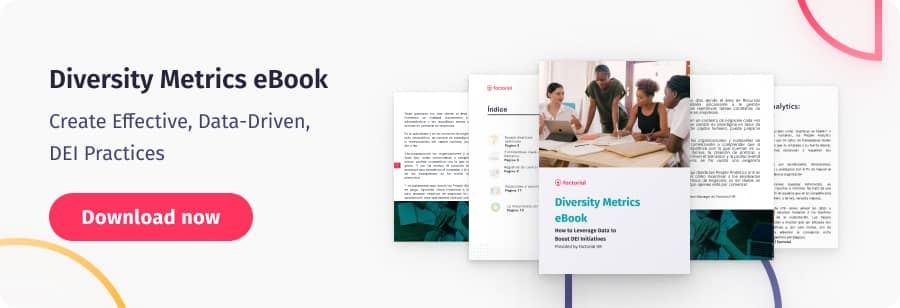The world is evolving, and with it, the expectations placed on businesses are shifting, especially among younger generations. There has been a social awakening and more than ever, younger generations are getting involved. Today’s stakeholders increasingly insist that success encompasses more than profits and margins. Surveys consistently show that people value organizations that prioritize diversity, equity, and inclusion (DEI) in the workplace. Effective inclusive leadership is the key to promoting DEI into an organization’s culture and driving meaningful change.
Are you an inclusive leader? Do you have what it takes to promote diversity and inclusion?
Read on to find out what the inclusive leadership definition is and how the right strategy can benefit your business. We’ll also take a look at the 6 characteristics of inclusive leaders.

What Is Inclusive Leadership: A Definition
Inclusive leadership is a style of leadership that promotes diversity equity and inclusion. It represents the ability to lead a diverse group of individuals in an inclusive and efficient manner, free from bias or workplace discrimination. An inclusive leader seeks to understand other cultures and be an advocate of equity for all.
The promotion of the inclusive leadership theory is usually part of a wider DEIB program (diversity, equity, inclusion, and belonging). This is where you implement measures to make sure your employees feel they are respected and treated fairly in an inclusive environment. They feel you acknowledge their work and that their work contributes to the achievement of corporate goals. This leads to increased engagement, motivation, and performance.
In contrast, if your leadership style is not focused on promoting inclusivity, it can have a negative impact on your business. For example, if employees feel they don’t belong, they are less likely to contribute ideas or participate in meetings. It also puts you at risk of claims relating to disparate treatment or adverse impact. And this can seriously damage your reputation as both a brand and an employer.
What Does Inclusive Leadership Look Like?
There are a number of common traits that represent inclusive leadership. We’ll look at the most important ones shortly when we look at the 6 characteristics of inclusive leaders. However, these skills are also important for promoting diversity management in the workplace and creating a safe space for all employees, regardless of background.
An inclusive leader is:
- Empathetic and able to connect with employees on an emotional level. This helps them create an environment that promotes inclusion and collaboration.
- Motivated to create a diverse workforce that operates in a safe and inclusive environment.
- Not afraid to show weaknesses and learn from others.
- Aware of biases both on the personal and organizational level.
- Open-minded and welcomes the ideas and perspectives of others.
- An advocate of diversity, equity, and inclusion at all times. This includes encouraging employees to create and participate in an employee resource group.
The Benefits of Inclusive Leadership
Now that we’re looked at the inclusive leadership meaning and definition, let’s take a look at some of the benefits of leading with inclusion.
First and foremost, inclusive leadership helps all employees feel that they are a part of the team. This sense of belonging makes people feel more confident and open to sharing ideas, opinions and perspectives. And the more input you have from a range of diverse opinions, the more likely you are to create an environment that breeds innovation and creativity. This can give you a competitive edge, helping you position yourself in the market and attract top talent to your business.
Secondly, according to the Deloitte study we mentioned above, teams with inclusive leaders are 17% more likely to report that they are high performing, 20% more likely to say they make high-quality decisions, and 29% more likely to report behaving collaboratively. To put it simply, inclusiveness directly enhances performance, reduces absenteeism and helps companies make better decisions. All this can have a positive effect on retention levels and reduce turnover costs. It also helps you build a productive and loyal workforce.
6 C's of Inclusive Leadership
As we already mentioned, although there are a number of traits that can help you succeed as an inclusive leader, there are 6 characteristics of inclusive leaders that are guaranteed to help you succeed. These characteristics and inclusive leadership skills can help you promote diversity and deal with uncertainty. And I think we can all agree that these are vital skills in this day and age.
Commitment
Cultivating a diverse, inclusive workforce takes time and energy. Inclusive management is therefore heavily reliant on leaders making a strong commitment to treating all team members with fairness and respect. Aside from being committed to the cause, inclusive leaders also need to hold themselves accountable and lead by example.
Courage
Courage is also a very important characteristic of inclusive leadership. Firstly, you need to be brave enough to challenge existing organizational attitudes and practices, even if it doesn’t make you very popular. This means challenging the status quo and calling out bias when you see it.
You also need the courage to display humility and accept your own limitations where necessary. This is the whole point of diversity and inclusivity: the minds of many are better than the mind of one.
Cognizance of Bias
It’s also important to be aware of bias as an individual and as an organization. This might be gender bias in recruitment, stereotypes, confirmation bias, or bias in offering opportunities for promotion, for example. An effective inclusive leader understands that bias limits your field of vision and prevents you from making objective decisions. You need to learn how to identify bias in the workplace and implement measures so that all employees have access to the same opportunities.
Curiosity
An inclusive leader needs to be curious and open to fresh ideas and perspectives. They need to be open-minded and have a passion for learning. This helps them to minimize blind spots and improve decision-making. Avoid snap judgements and accept that some uncertainty is inevitable.
Cultural Intelligence
Cultural intelligence is also vital if you are creating a cross-cultural team. An inclusive leader values cultural differences and seeks opportunities to learn about individuals from a diverse range of backgrounds. They should also be aware of how cultural stereotypes can influence expectations.
Collaboration
The last of the 6 inclusive leadership characteristics that we are going to highlight is collaboration. Collaboration is what diversity is all about.
Inclusive leaders need to create an environment where all employees feel safe and confident enough to voice their opinions and share their input. Cultivate a sense of collaboration and create a group identity based on shared goals. Focus on building trust and, above all, avoid favoritism at all costs.

Inclusive Leadership Training
A great way to encourage diversity and inclusion leadership in your company is to offer your managers the right training. The right learning and development opportunities can help your workforce understand the importance of respecting, hearing, and applying diverse thinking at every level of your company.
The most effective courses will engage your leaders in behavioral and cultural change. The training you implement should strengthen existing leadership skills and help your managers foster inclusive workplaces where all employees are able to contribute to the goals of the company. Ultimately, whatever course you opt for, it should be built on a foundation of respect, belonging, empowerment, and progression.
Training is only half the battle though. For inclusive leadership to be truly effective, you also need to work on promoting cultural competence. You need to make sure all employees embrace a culture of diversity, equity, inclusion, and belonging. This will help you foster a diverse workforce and create an environment that is open to and accepting of a variety of experiences.
How to Be an Inclusive Leader
Let’s end with a few best practices for inclusive leaders:
- Don’t be scared to talk about diversity, equity, and inclusion.
- Make sure you are open, ready, and willing to learn.
- Focus on building listening and communication skills. This will help you create personal connections with all employees.
- Training should be structured as continuous learning. Leaders should attend inclusive leadership training on a regular basis to keep skills sharp. This will help your managers keep their fingers on the pulse and identify any triggering biases before they become a problem.
- If possible, consider implementing a mentorship program so that experienced leaders can share their own experiences.
- Track and monitor the right KPIs so that you can see how you are progressing as a company. You can get ideas of what to look out for in Factorial’s free diversity metrics eBook.
- Encourage your managers to ask for regular feedback from their teams. They can use 1:1 meetings to find out how their leadership approach is being received. Do employees feel valued and heard? Do they feel they can address concerns with managers when needed?
- Invite employees from all backgrounds to meetings, engage them and ask them for their opinions. Look for fresh ideas whenever you can.
- Finally, the best way to transform your company through inclusive leadership is to focus on building a culture of inclusion. Make inclusivity a daily practice at all levels of your company. Be the change you want to see.


